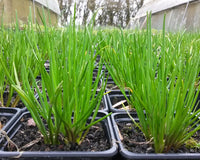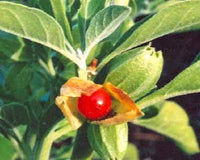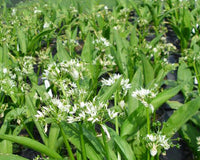Originating from the Mediterranean, thyme has been treasured for centuries for its unmistakable aroma, culinary versatility, and medicinal properties. But with over a dozen thyme varieties to choose from, from traditional culinary types to decorative ground covers, knowing which thyme to grow can feel overwhelming.
That's where this guide comes in. We've organised 15 thyme varieties by their growing habits (upright, creeping, and intermediate) and highlighted their key attributes so you can quickly find varieties suited to cooking, pathways, containers, or even challenging conditions like heavy clay and wet UK winters. Along the way, you'll discover medicinal uses, folklore, and essential growing tips.
In this guide:
🌱 Understanding Thyme Growth Habits
👨🍳 Upright Varieties (for cooking)
🌿 Creeping Varieties (for ground cover)
🪴 Intermediate Varieties (for containers)
💊 Medicinal Uses & Folklore
🐝 For the Bees
⚡ Quick Reference Guide
Understanding Thyme: Growth Habits and Growing Conditions
Thyme is a short growing shrubby perennial which can be divided by its growing habits for planting purposes: the truly flat growing creepers, the intermediate creepers that tumble and arch, and the upright varieties.
Sun Requirements
All thymes love sun – they can never be too hot! South facing aspects are optimal as this is the sunniest spot year-round. A thyme growing in a sunny west facing site in the height of summer receives sun between 1pm and 8pm, but during the winter only between 1pm and 4pm - which often isn't enough for these sun-loving plants.
Soil and Drainage
All varieties require well drained soil. For example, thymes on heavy clays will grow well during the summer but often die a slow wet death in winter. This shouldn't put you off growing them – they do really well in containers, between slabs of paving and in wall tops that don't dry out completely in summer.

Choosing Your Thyme: A Variety Guide
With so many thyme varieties available, knowing which to choose can feel overwhelming. Here's our guide to help you find the perfect thyme for your needs.
Upright Thyme Varieties (Height: 30-60cm)
These bushy thymes are your culinary powerhouses, perfect for herb gardens and containers.
Common Thyme
🔪 For cooking | 💊 Medicinal use
Thyme always packs a punch flavour-wise and common thyme doesn't need much introduction; it is used to flavour so many foods. It is one of the herbs in bouquet garni along with sage, bay and parsley – a small bunch of herbs tied together and dangled on a length of string into cooking casseroles, soups etc. to add flavour. A true all-rounder and the one to choose if you want that classic, familiar thyme taste.
Orange Thyme
🔪 For cooking | 🍊 Winter dishes | 👃 Aromatic
A versatile, beautifully flavoured, slightly musky thyme that lends itself to long cooking, making it perfect for slow cooked recipes – sausages in cider and cream, lentils with chorizo, French onion soup, to name a few. Of course, it will impart its fabulous flavour into any dish that simply calls for 'thyme' – a wonderful alternative to common thyme.
Lemon Thyme and Variegated Lemon Thyme
🔪 For cooking | ☀️ Summer dishes | 🪴 Containers | 👃 Lemon scent
With a fresh fragrant lemon tang, these two thymes are excellent in both sweet and savoury dishes and especially popular with chicken. There are plenty of recipes online for lemon thyme ice cream and lemonade – and made into a syrup it offers a fabulous addition to cocktails.
Lime Thyme
🔪 For cooking | ☀️ Summer dishes | 🍹 Cocktails | 👃 Lime scent
With its lime fresh zesty flavour, lime thyme adds great flavour to sweet dishes such as ice cream, syrups, sauces and cocktails. Add it to fresh salsas when 'going Mexican', incorporate into salad dressing and use to flavour chicken dishes.
Silver Posie Thyme
🔪 For cooking | 🌸 Decorative
This very pretty silver thyme offers the flavour of common thyme whilst adding colour and variety in garden planting plans and containers, particularly framed against darker colour foliage.
Camphor Thyme
💊 Medicinal use | 👃 Strong scent
A very strong flavoured thyme with a high thymol content, it should be used sparingly in cooking. Medicinally it is excellent made into a tea for coughs and colds and useful as an antiseptic wash.
Creeping Thyme Varieties (Flat growing, mat-forming)
Perfect for pathways, between paving stones, and trailing over containers.
White Creeping Thyme
🌸 Decorative | 🌿 Ground cover | 🚶 Pathways | 🪴 Containers
Small dark leaves with pretty white flowers. This ornamental thyme lacks strong culinary flavour but creates beautiful ground cover, especially when planted alongside Red and Bressingham Pink varieties for a patchwork effect. Perfect between paving stones, wall tops, and trailing over container edges.
Red Creeping Thyme
🌸 Decorative | 🌿 Ground cover | 🚶 Pathways | 🪴 Containers
Creates colourful ground cover with pink-red blooms. This ornamental variety lacks strong culinary flavour but makes up for it with visual appeal. Plant with White and Bressingham Pink varieties for stunning colour combinations. Roots as it grows, forming a carpet effect ideal for paving gaps and trailing over edges.

Bressingham Pink Thyme
🌸 Decorative | 🌿 Ground cover | 🚶 Pathways | 🪴 Containers
Soft pink flowers create stunning displays in summer. This ornamental thyme is grown for beauty rather than flavour - plant it alongside White and Red Creeping varieties to create a colourful patchwork in pathways or rockeries. All three attract masses of bees and butterflies when flowering.
Doone Valley Thyme
🔪 For cooking | 🚶 Pathways (light traffic) | 🌸 Decorative | 👃 Lemon scent
A pretty little variegated creeping thyme with a delicious lemon scent, which can be added to dishes in the same way as lemon thyme. Its best attribute however is for paths - the springiness of the foliage lends itself to light footfall, where it will lift your spirits as the lemon scent is released.
Wild Creeping Thyme
🔪 For cooking | 🪴 Containers & trailing
This larger leaved variety has a slightly milder flavour than regular thyme, but this shouldn't stop you using it in the kitchen. It spreads well and trails beautifully out of pots; the stems root into the soil as it grows but it has a looser structure than the mat forming creeping varieties.
Woolly Thyme
🌸 Decorative | 🪴 Containers & trailing
Like the other flat growing thymes, this lacks any useful flavour in the kitchen, but makes up for it in appearance. The long stems filled with small fluffy grey-silver leaves root as they travel, creating ground cover and trailing out from containers.
Intermediate Thyme Varieties (Arching and mounding)
These varieties sit between upright and creeping habits, offering beautiful forms for containers and path edges.
Golden Thyme
🔪 Mild cooking | 🌸 Decorative | 🪴 Containers
This startlingly pretty golden leaved variety produces soft mounds of foliage that look amazing in bowl type containers or as edging along a path. Though not a flat variety, it is still a creeper, rooting gradually as it grows. Golden thyme is used as a culinary herb but doesn't pack the same punch as other thymes.

Caraway Thyme
🔪 For cooking | ✨ Unique flavour | 🪴 Containers & trailing | 👃 Caraway scent
With its unique, sweet caraway scent and flavour, this gently arching variety can be included in many dishes, especially ones where a caraway flavour might usually be used. It has a creeping habit and trails delightfully over walls, pots and containers.
Tabor Thyme
🔪 For cooking | 🌧️ Wet conditions | 🪴 Containers
A tumbling thyme with attractive sprawling habit - not quite a creeper and not quite upright. One of the best thymes for UK wet winters, making it ideal for heavy clay soils or damp conditions. Good culinary flavour and looks attractive trailing over walls and containers. Pair with Foxley for a resilient herb garden.
Foxley Thyme
🔪 For cooking | 🌧️ Wet conditions | 🪴 Containers | 🌸 Decorative
Beautiful tumbling thyme with splashes of cream variegation on the leaves. Like Tabor, this is one of the tougher thymes that copes well with UK wet winters. Good culinary herb with an attractive sprawling habit - excellent growing over walls and containers.

Thyme's Medicinal Properties and Folklore
Thyme has been treasured for centuries for its powerful medicinal qualities. A thyme tea is often the first go-to at the sign of a cold - add a slice of lemon and some honey for sweetness (and to soothe a sore throat), plus some root ginger if you're feeling cold and shivery. Want to make your own remedy? Check out our thyme syrup recipe - it's simple to make and stores for up to two months in the fridge.
Thyme with its strong antiseptic properties is also used cosmetically. A cleansing wash for the face can be made with a strongly infused tea and lemon juice. According to William Withering in the eighteenth century, thyme tea was even a good cure for a hangover!
Thyme has also been long associated with magic and folklore. Wearing thyme on your person enabled you to see fairies and if you were a female it had the added bonus of making you irresistible! Thyme under the pillow ensures a restful night's sleep. Burning thyme helps purify rooms and buildings, whilst bathing in bathwater infused with thyme helps remove sorrows from the past.
💊 Want to learn more about thyme's medicinal properties? Read our in-depth guide: Medicinal Uses of Thyme
Thyme for the Bees

All thymes are adored by bees – especially some of the more solitary types like the blue mason bee. No bee-friendly garden should be without thyme. In the height of summer, thyme flowers are alight with foraging bees and butterflies working them tirelessly for their nectar. Whether you choose culinary, ornamental, or medicinal varieties, you'll be supporting vital pollinators.
Quick Reference: Which Thyme Should I Choose?
🔪For traditional cooking: Common Thyme or Silver Posie
🍊 For winter dishes: Orange Thyme
☀️ For summer cooking & BBQ: Lemon or Lime Thyme
✨ For unique flavours: Caraway Thyme
💊 For medicinal use: Camphor or Common Thyme
🚶 For pathways (light traffic): Doone Valley
🌿 For ground cover: White, Red, or Pink creeping varieties
🪴 For containers & trailing: Wild Creeping, Caraway, Golden, or Woolly
🌧️ For wet UK winters: Tabor or Foxley
🌸 For decorative beauty: Silver Posie, Golden, Doone Valley, Foxley, White, Red, or Pink creeping varieties
Browse our full range of thyme varieties
Have questions about which thyme is right for you? Get in touch - we're always happy to help!






